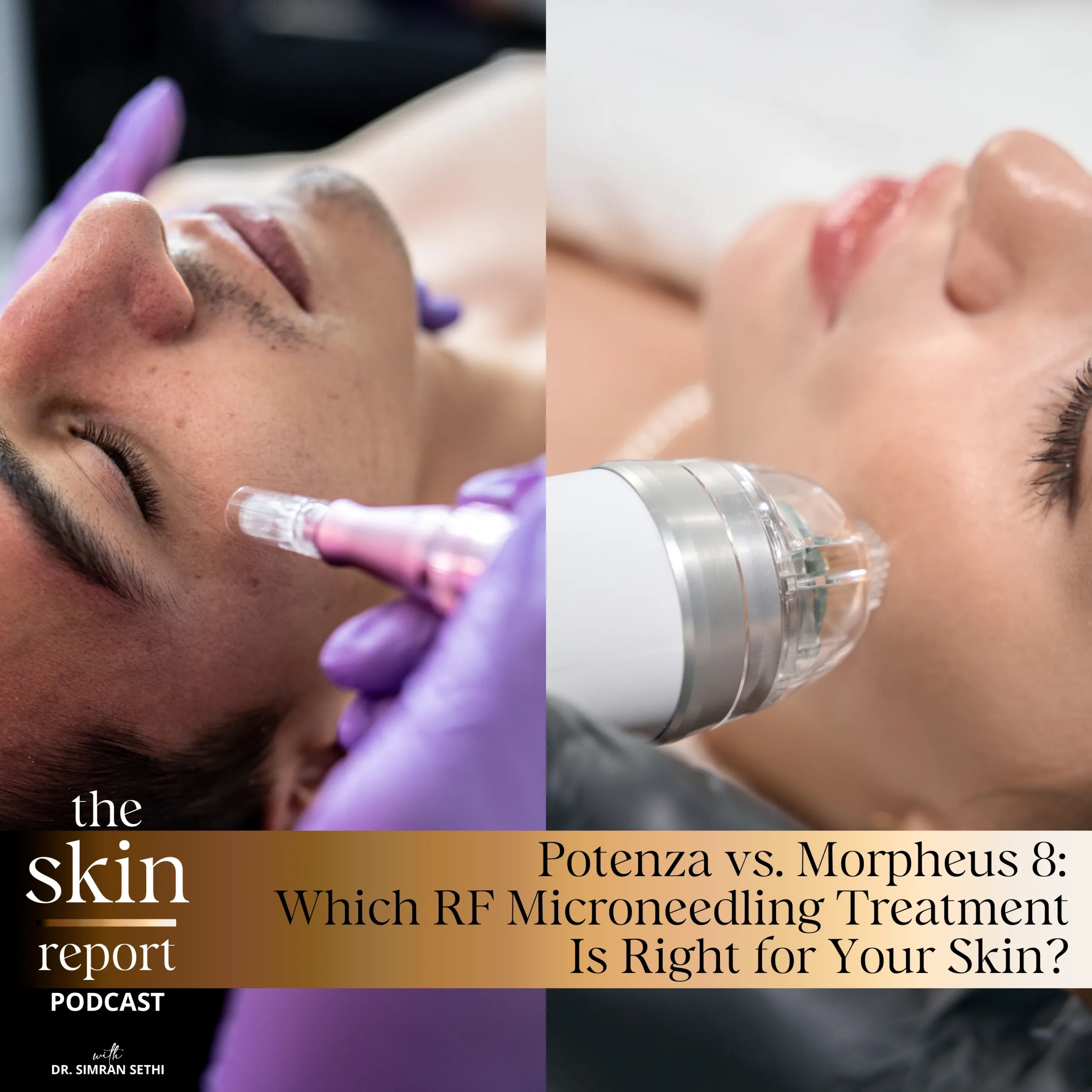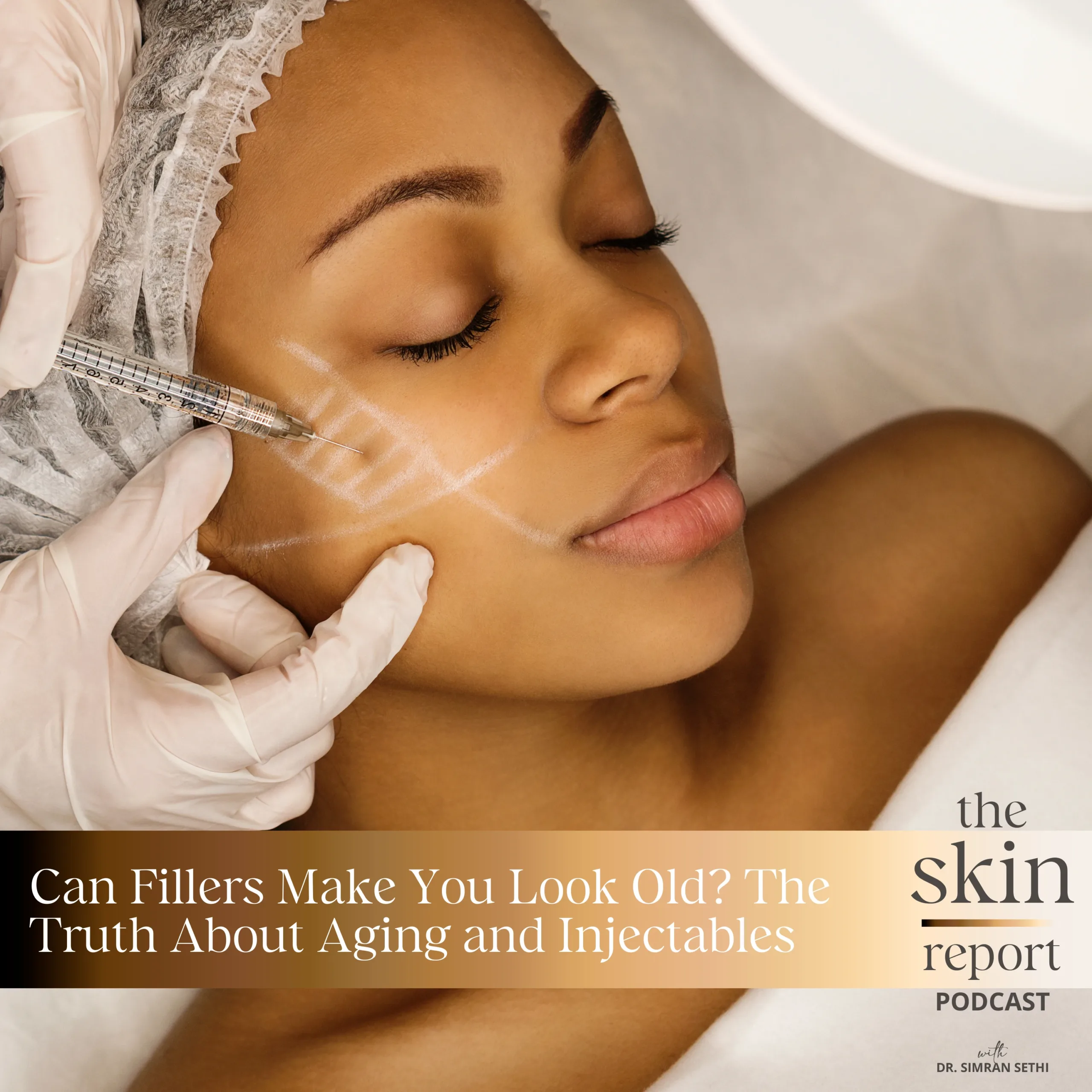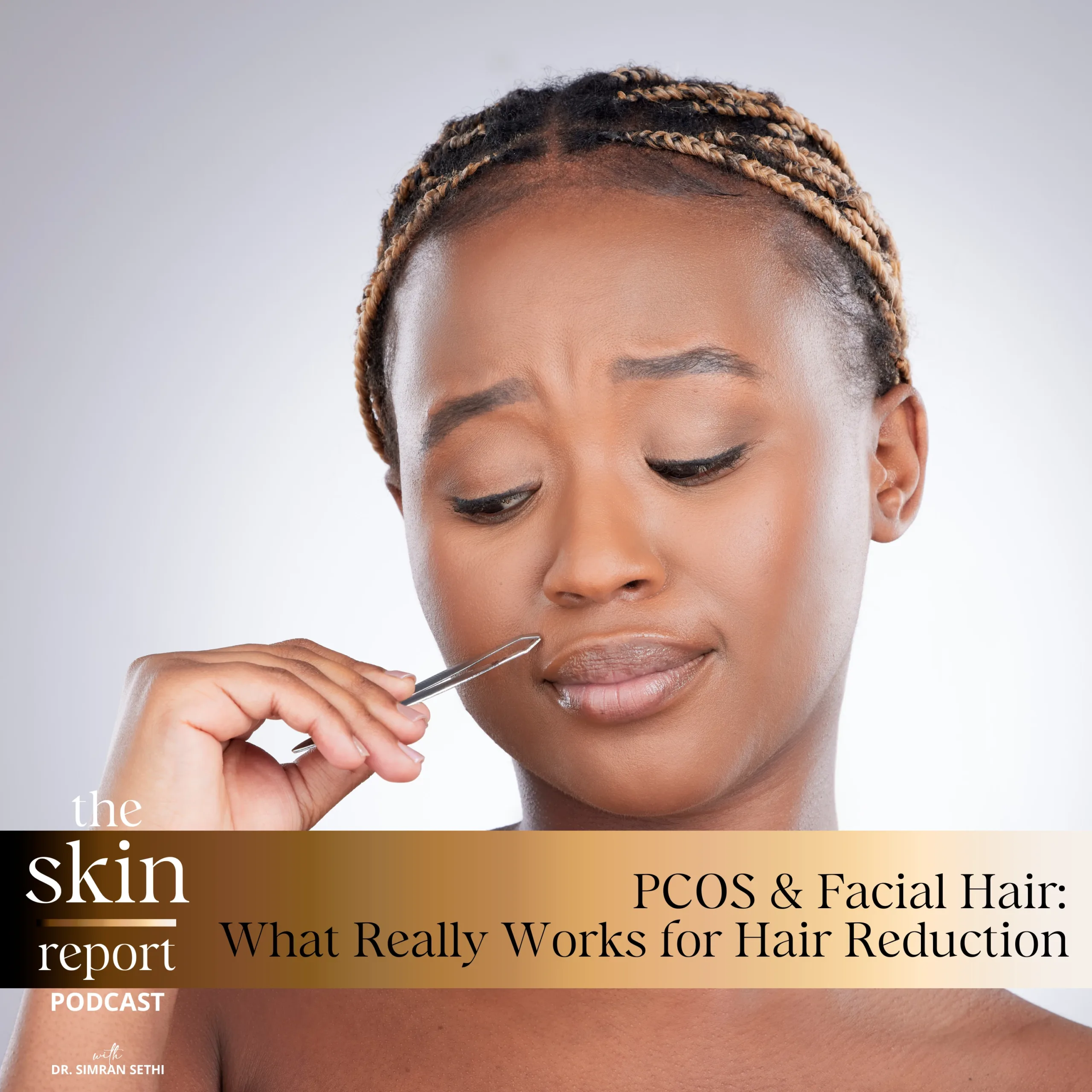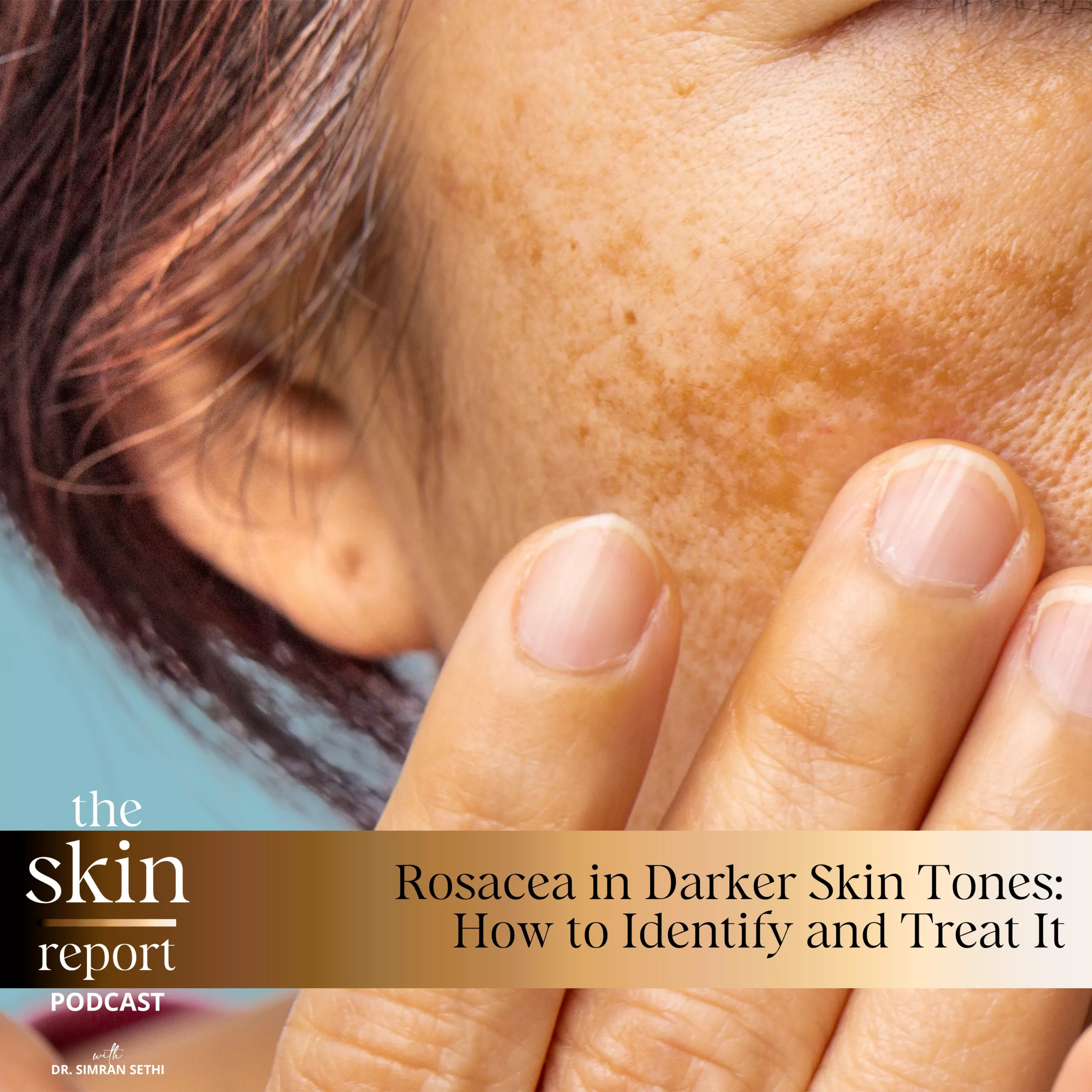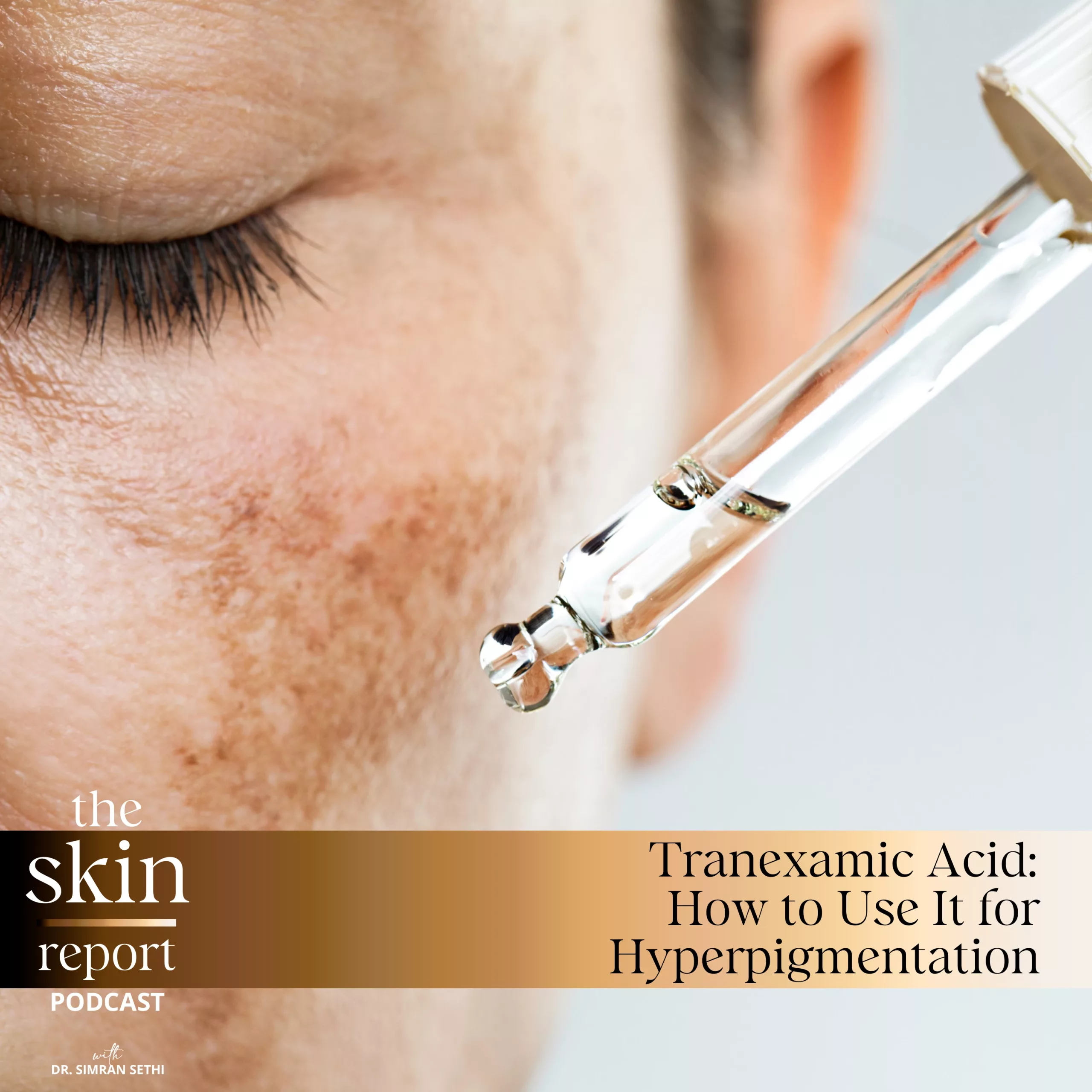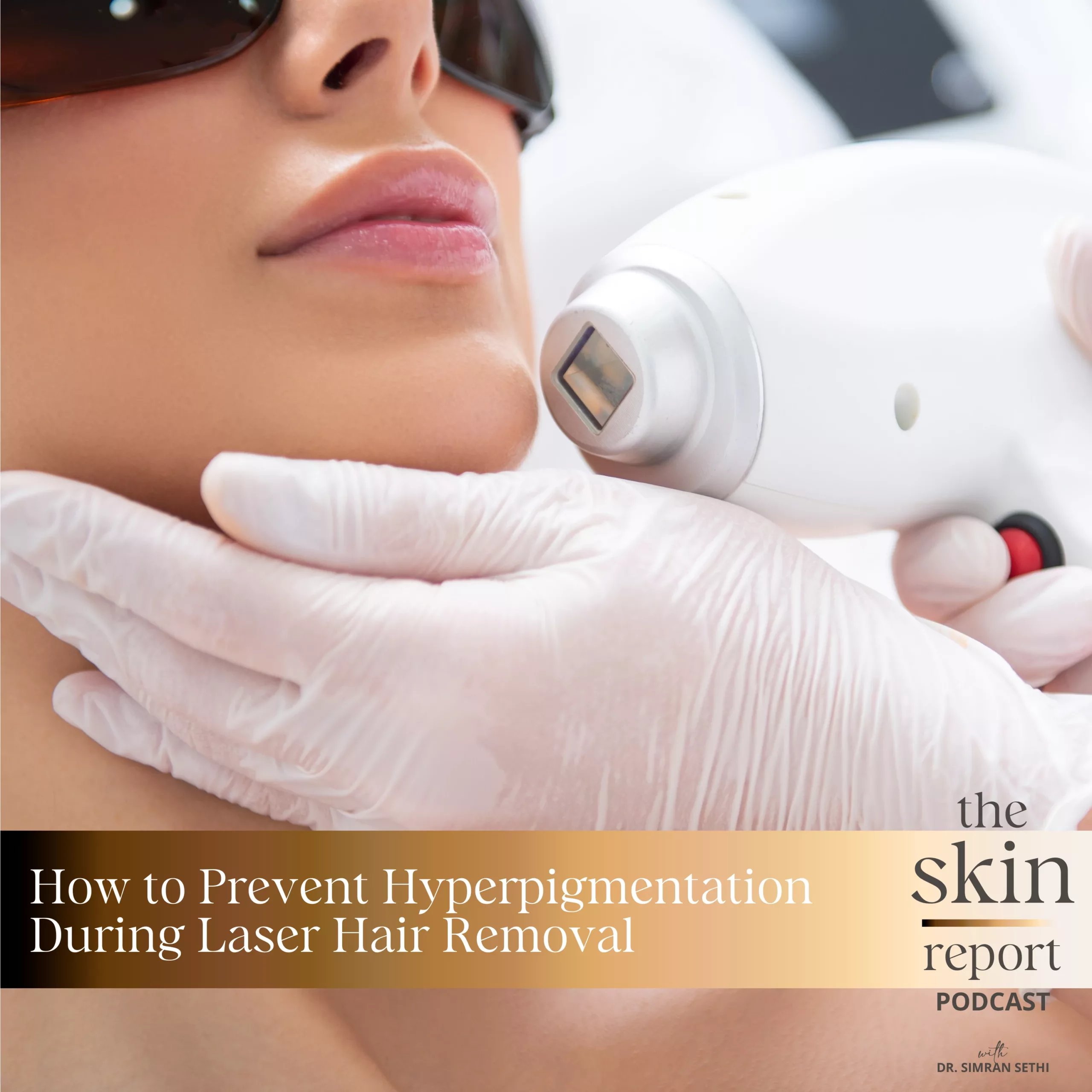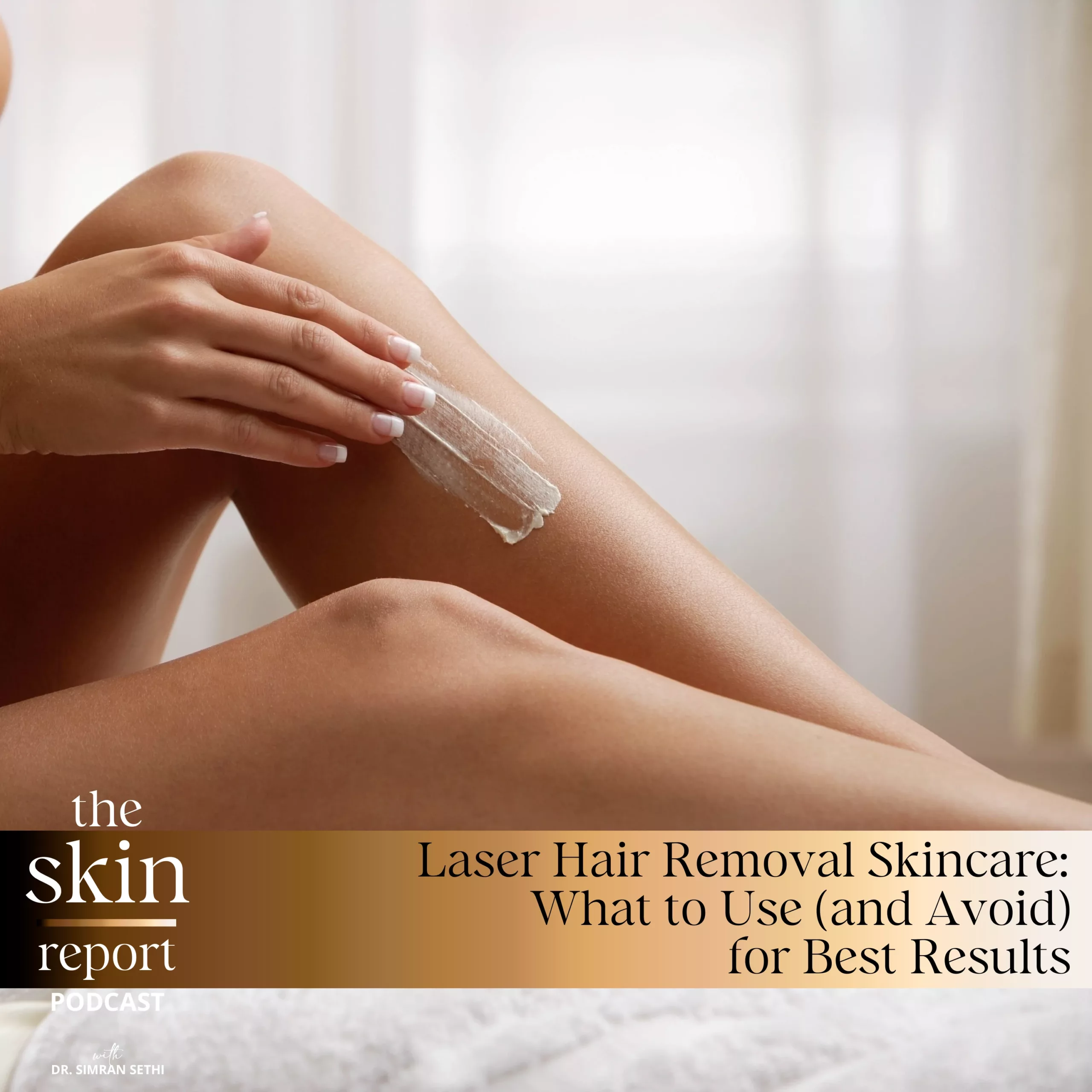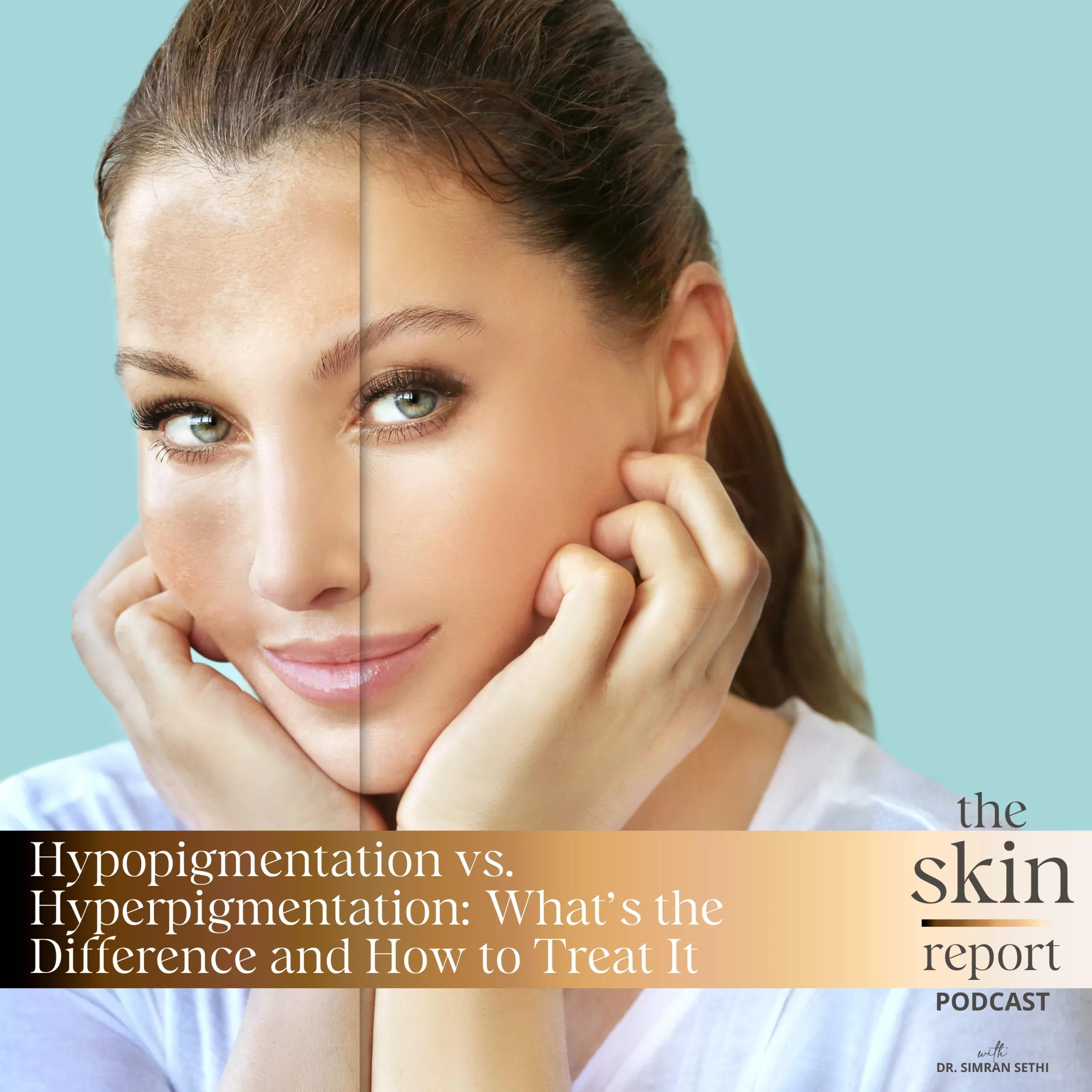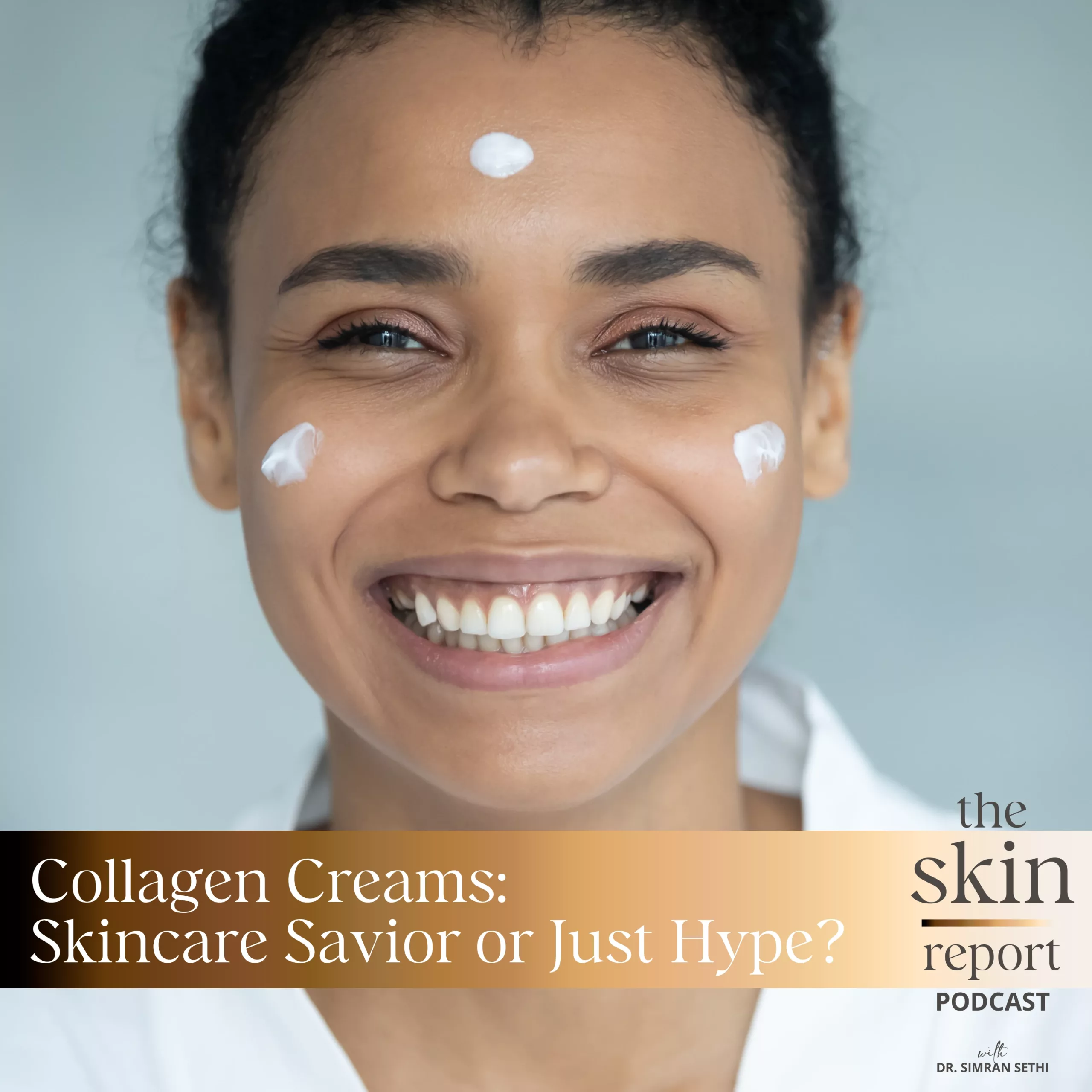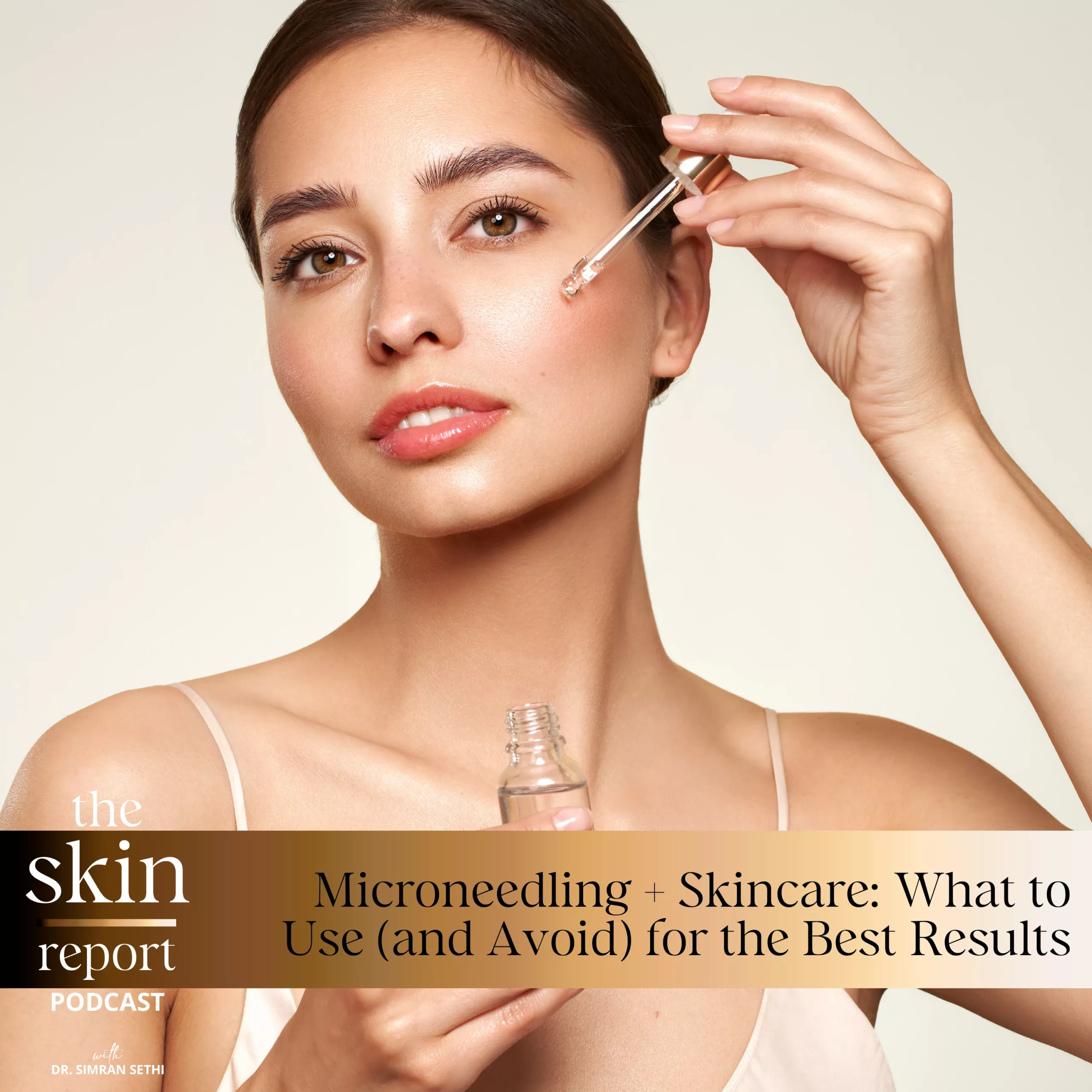Pregnancy can bring many significant changes to our lifestyles and, of course, our bodies. However, becoming a parent can also cause changes to the skin and produce effects that aren’t as commonly discussed. Still, these changes can be significant, and it is essential to understand how skin may change due to the hormonal shifts and impactful experiences that can occur during pregnancy.
The Skin Report is a podcast created to educate listeners on methods to improve skin health for people of all ethnicities and ages. On this episode, host Dr. Sethi talks about how the skin changes during pregnancy and what child-bearing people can do to address pre and post-natal skin concerns. She explains the skin conditions a person may experience from hormonal fluctuations and other pregnancy effects. Finally, Dr. Sethi explains how pregnancy can impact the skin and how to safely treat the skin effects brought on by this momentous life event
Beauty Instagram: https://www.instagram.com/renewmd_beauty/
RenewMD Beauty Medical Spas, California: https://renewmdwellness.com/
This transcript was exported on August 30, 2022 -view latest version here.
Skincare can sometimes feel overwhelming, whether it’s finding the right products, ingredients or treatments, there’s a lot out there, but not always for women of color. That’s why I set out to educate myself and others so that we can all feel beautiful in our skin. Hello, and welcome to the Skin Report. I’m Dr. Simran Sethi, an internal medicine doctor, mom of three and CEO and founder of RenewMD Medical Spas, and Skin by Dr. Sethi.
Today I want to chat about skin during pregnancy, what changes and why, and what we can do to address pre and postnatal skin concerns. Whether you have children, are planning a family or have no interest in motherhood, it’s important to understand how our skin can change due to hormones during pregnancy, or simply when our bodies evolve and grow. Knowledge is power, and I believe that every childbearing person has the right to know what their skin is experiencing, what it may experience due to hormonal and big life changes and what to do if these changes have already occurred. It goes without saying, that becoming apparent alters everything. It changes our bodies, it changes our lifestyles, our careers, and more. Becoming a parent can also change our very own skin. The hormonal shifts during pregnancy have a significant impact, particularly our increase in estrogen and progesterone. A woman produces more estrogen in one pregnancy than she does in a lifetime. The four most common skin changes a person may experience are hyperpigmentation, acne, stretch marks and vascular changes, or spider veins.
In this episode, we’ll dive into each one of these changes and what causes them during pregnancy. We’ll discuss and describe what changes are, how they occur and what treatments are safe or unsafe for pregnant persons. This is a large topic because each person is different and has unique experiences, but I want to dedicate this episode to skin during and after pregnancy and the best, most results based and safest ways to feel amazing in your skin during and after this momentous change.
Let’s talk about the most common things you may experience during pregnancy or hormonal change. A more common change is hyperpigmentation, or increased pigmentation, which can occur in two ways. The first being in localized areas like the midline of the abdomen, this vertical line of hyperpigmentation, also known as linea nigra, occurs in around 75% of pregnancies. However, the most problematic hyperpigmentation scene in pregnancies is known as melasma, which appears as dark patches on the cheeks, upper lip andforehead. Approximately 1% of the general population encounters melasma, however, it’s more common for certain skin types, such as skin types three to five.
Skin tones that are very light or very dark, do not have a high tendency towards developing melasma. This isn’t true for all women. In fact, 15 to 50% of pregnant patients will develop melasma depending on the group and skin tone, according to a study published in the National Library of Medicine. Melasma’s most commonly seen in women of Asian, Indian,Middle Eastern, Latino, and North African descent. Melasma causes increased activity of melanocytes, which are the melanin-producing cells. Even though we know that melasma frequently occurs during the second and third trimester of pregnancy, we do not know exactly which hormones trigger it. We do know however that estrogen levels are at their highest during the first trimester, which may trigger melasma in women who are predisposed to it in the second or third trimester. Melasma is a frustrating conditionbecause it waxes in wanes, and we only know that it worsens with exposure to sunlight, heat, or changes in hormone levels.
Now melasma, isn’t exclusive to pregnancy. It can also, and frequently emerges when women are getting close to menopause. Finally, melasma can also occur in men, but this is exceedingly rare. When melasma does occur in men, it is most common in Asian, Middle Eastern and Latino men. However, it is most commonly seen in pregnant patients, hence why it’s often called the mask of pregnancy. We know that melasma worsens with exposure to heat and UV light, so diligently bring sunscreen, even on cloudy or rainy days, is the best way to safely reduce pigmentation from melasma during pregnancy. Typically, this hyperpigmentation will not worsen after delivery and can disappear on its own postpartum. However, it may take several months to lessen, so patience is key. Certain skin treatments and products can help lighten its appearance.
Melasma is a complex condition that is common in women of color and deserves its own episode. By subscribing to The Skin Report, you can stay up to date on our topics and catch our future episodes on melasma. When we return, we’ll dive into the other skin conditions pregnancy can trigger such as hormonal acne and stretch marks.
As said earlier in the episode, women experience intense levels of estrogen, which has an impact on our skin. For example, women’s sebaceous glands produce more sebum or oil when their estrogen levels are high. This can lead to increased acne lesions, especially in the first and second trimesters as estrogen levels are highest then. While there hasn’t been a ton of research on pregnancy acne within the US, we do have some international studies we can look at for a clearer picture. A French epidemiology study from 2013 found that over 40% of women experienced acne during their pregnancy. In 2020, the International Journal of Dermatology published a Turkish study conducted from 2016 to ’19 on pregnant women with acne. It revealed that 57% of patientsdisplayed mild acne, 30% moderate, 12% had severe acne and 2% had very severe acne. Truncal acne or acne seen on the back, chest and shoulders was seen more in the third trimester than the first two.
While acne is commonly seen in pregnancy, it tends not to be cystic or with very large lesions that cause people to seek medical attention generally. In my practice, I barely see women with hormonal acne from pregnancy because it’s on the milder side, and of course, it does disappear after pregnancy. So if youare experiencing hormonal acne during pregnancy, what can you do? First, I’d like to say that there are some ingredients that should be avoided in your skincare routine like retinol and hydroquinone. These are effective compounds that are pharmaceuticals,but have not been studied in pregnant women. We do know that taking an oral retinoid called Accutane leads to terrible birth defects, which is why this is only prescribed when women are put on two forms of birth control. Topical retinol, which is commonlyused for acne treatments, has not been shown to cause birth defects, but it has also not undergone any large studies in pregnant women. So just to be safe, avoiding any retinoids or hydroquinone in pregnancy is a better approach than seeking more aggressive treatments, especially because this acne is milder and will correct after pregnancy.
Before I go any further, I like to just say that you should always read the packaging for warnings against use during pregnancy. While everyone’s skin needs different treatments, I would highly recommend consulting with your doctor and or dermatologist to determine which products are safe to use. A routine consisting of a cleanser with salicylic acid, a vitamin C serum, moisturizer, along with sunblock, is an effective and safe routine during pregnancy. On the other hand, facials are safe and a great way to fight your acne. Even facials with microdermabrasion tend to be safe. But again, I would always consult a professional. Finally, microneedling, a more intense medical grade skin treatment used to treat acne scars or just build new collagen, is also safe during pregnancy. However, I highly recommend just waiting till a few months after delivery to start doing more intense treatments as the skin changes a lot post-pregnancy, and you may not even need that intensity of treatments at that point.
Typically, our skin will return to its pre-pregnancy state a few months or even six months postpartum, with many of our pregnancy skin issues also lessening. An exception to this maybe a small percentage of those who experienced melasma. But as earlier stated, there are treatments we can do to help with this. However, if there are other treatments and procedures you’d like to try, stick around to find out if they’re safe.
If you are looking to do your normal aesthetic treatments during pregnancy, I’d like to first caution you, lasers do not emit ionizing radiation like an X-ray or CT scanner, which we know will directly harm the fetus. However, laser practices on pregnant women have not been studied, we simply don’t have enough data to prove their safety for pregnant women, and therefore they should be avoided. In general, pregnant women are more prone to hyperpigmentation, especially women of color and lasers can increase the risk of hyperpigmentation. Botox has not been studied in pregnant and nursing mothers, and therefore should also be avoided.
In general, fillers have not been studied for use during pregnancy, so I also recommend avoiding all fillers. Additionally, I would avoid using fillers as the face tends to be more swollen during pregnancy and women undergo intense water and weight changes throughout the duration of the pregnancy. With these changes, it’s difficult to assess how the face will look post delivery. As we discussed in our body sculpting episode, body sculpting should also be avoided during pregnancy. When it comes to stretch marks, the truth of the matter is that genetics play a large role. In our previous episode on busting myths around coconut oil, we chatted about how stretch marks will form in the skin as it stretches regardless. However, adding more lipids may theoretically reduce the extent of the mark. While this may seem discouraging, I want to remind pregnant women that many skin related pregnancy changes will disappear after delivery. That’s why it’s best to be patient and to wait several months, up to six months, after delivery to see if any problems need to be addressed. From there, you can work with your dermatologist or aesthetician to find the safest and most effective path.
Whether you’ve already given birth, plan to or never want to, it’s important to have a proper knowledge of what happens to our skin when we carry to term. With a great understanding of the experience of pregnancy, we can make more informed decisions and empower ourselves and the women in our lives.
If you’d like to learn more about science-backed skincare or medical aesthetic treatments, please subscribe to and turn on notifications for The Skin Report so you always know when a new episode is up. We have a newsletter that you can sign up for on renewmdwellness.com, so that you can stay up to date on all our new episodes, blogs, products and more. Additionally, if you have a skincare question or want to make an episode topic recommendation, please message me at renewmdwellness.com, which is linked in my show notes, and I’ll be sure to answer your question in an episode soon. Thank you all for listening today, I hope you have a great summer full of fun plans and glowing skin.
Transcript by Rev.com


